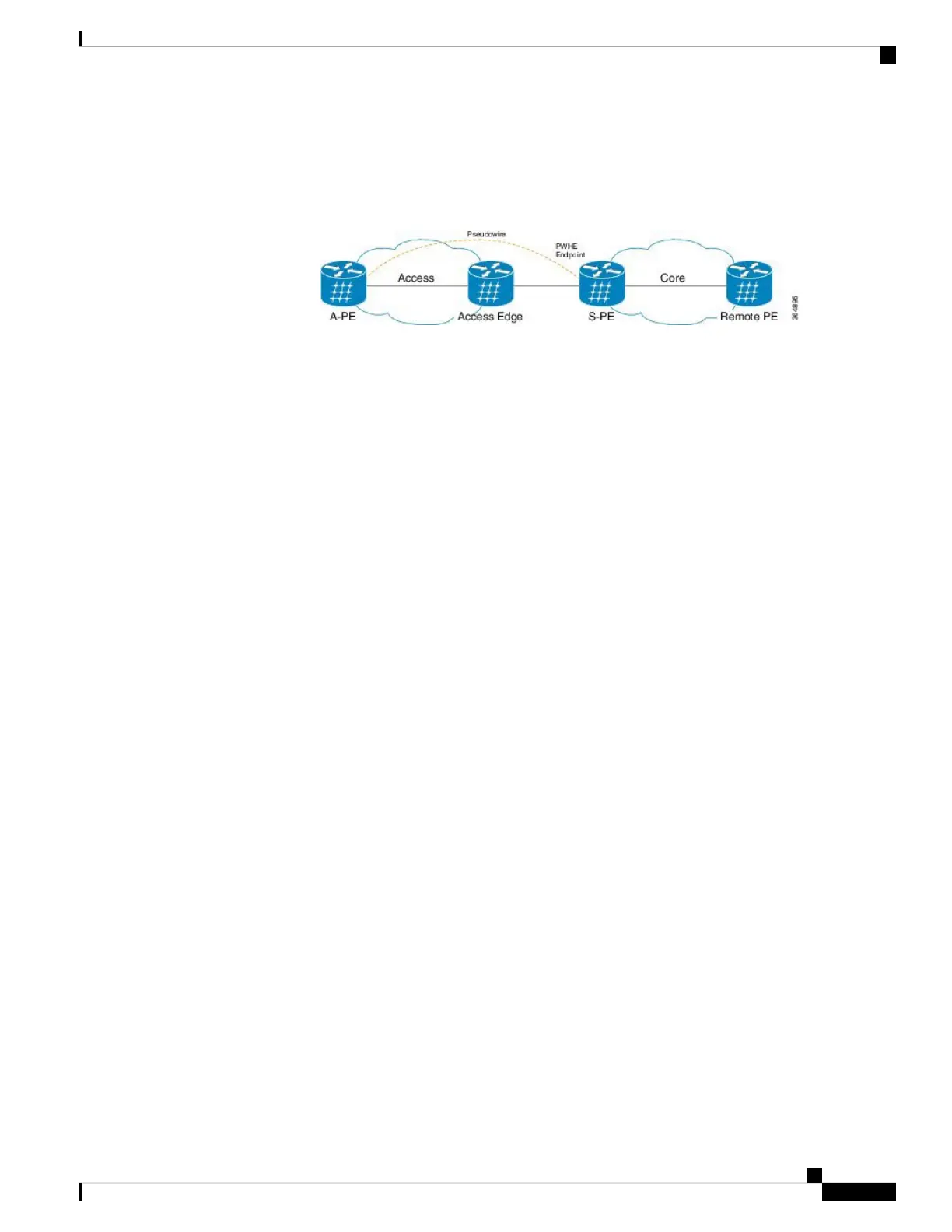PWHE cross-connects to a pseudowire neighbour, which is reachable through recursive as well as non-recursive
prefix. The reachability through recursive prefix is through introduction of BGP RFC3107 support on the
Cisco ASR 9000 Series Router. Consider the following network topology for an example scenario.
Figure 29: Pseudowire Network
For PWHE x-connect configuration, interconnectivity between A-PE (Access Provider Edge) and S-PE is
through BGP RFC3107 that distributes MPLS labels along with IP prefixes. The customer network can avoid
using an IGP to provide connectivity to the S-PE device, which is outside the customer's autonomous system.
For all practical purposes, the PWHE interface is treated like any other existing L3 interface. PWs operate in
one of the following modes:
• Bridged interworking (VC type 5 or VC type 4)
• IP interworking mode (VC type 11)
With VC type 4 and VC type 5, PWs carry customer Ethernet frames (tagged or untagged) with IP payload.
Thus, an S-PE device must perform ARP resolution for customer IP addresses learned over the PWHE. With
VC type 4 (VLAN tagged) and VC type 5 (Ethernet port/raw), PWHE acts as a broadcast interface. Whereas
with VC type 11 (IP Interworking), PWHE acts as a point-to-point interface. Therefore there are two types
of PWHE interface—PW-Ether (for VC type 4 and 5) and PW-IW (for VC type 11). These PWs can terminate
into a VRF or the IP global table on S-PE.
Benefits of PWHE
Some of the benefits of implementing PWHE are:
• dissociates the customer facing interface (CFI) of the service PE from the underlying physical transport
media of the access or aggregation network
• reduces capex in the access or aggregation network and service PE
• distributes and scales the customer facing Layer 2 UNI interface set
• implements a uniform method of OAM functionality
• providers can extend or expand the Layer 3 service footprints
• provides a method of terminating customer traffic into a next generation network (NGN)
Restrictions
• FAT (flow-aware transport) labels or entropy labels are not supported on PWHE.
• The system load balances PWHE based on PWID on the originating PE router over the interfaces in the
generic interface list, and also on PWID on subsequent P routers.
• PWHE is not supported over 2
nd
level BGP Labeled Unicast (LU) recursion.
L2VPN and Ethernet Services Configuration Guide for Cisco ASR 9000 Series Routers, IOS XR Release 6.3.x
223
Implementing Multipoint Layer 2 Services
Benefits of PWHE

